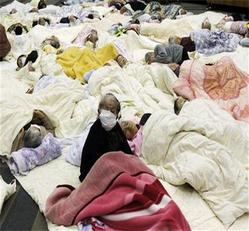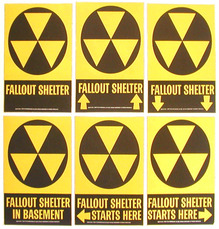
We are within weeks of what may be humankind’s most dangerous moment and it is coming just as the greatest credit bubble in history is about to pop. Images of the movie Armageddon, with Bruce Willis, have been hanging like a cloud over me. In the movie, everyone on earth was watching to see if Willis would succeed in blowing up the incoming asteroid. If he and his team failed, everyone on earth was going to die so everyone was paying attention and praying for salvation.
The most dangerous situation humanity has ever faced is upon us and no one is watching. Only a few have reported on what is about to happen starting in November. The operation, to remove 400 tons of highly irradiated spent fuel beneath the plant’s damaged Reactor No. 4, could set off a catastrophe greater than any we have ever seen, independent experts warn. An operation of this scale, says plant operator Tokyo Electric Power Company, has never been attempted before, and is wrought with danger.
The New York Times reports, “Thousands of workers and a small fleet of cranes are preparing for one of the latest efforts to avoid a deepening environmental disaster that has China and other neighbors increasingly worried: removing spent fuel rods from the damaged No. 4 reactor building and storing them in a safer place.”
The Japan Times writes, “In November, Tepco plans to begin the delicate operation of removing spent fuel from Reactor No. 4 [with] radiation equivalent to 14,000 times the amount released by the Hiroshima atomic bomb. Removing its spent fuel, which contains deadly plutonium, is an urgent task. The consequences could be far more severe than any nuclear accident the world has ever seen. If a fuel rod is dropped, breaks or becomes entangled while being removed, possible worst-case scenarios include a big explosion, a meltdown in the pool, or a large nuclear fire. Any of these situations could lead to massive releases of deadly radionuclides into the atmosphere, putting much of Japan — including Tokyo and Yokohama — and even neighboring countries at serious risk.”
The operator of Japan’s crippled Fukushima nuclear plant is preparing to remove 400 tons of highly irradiated spent fuel from a damaged reactor building. Containing more than 1,300 used fuel rod assemblies packed tightly together they need to be removed from a the third floor of a building that is vulnerable to collapse, should another large earthquake hit the area.
Tepco expects to take about a year removing the assemblies. Each fuel rod assembly weighs about 300 kilograms (660 pounds) and is 4.5 meters (15 feet) long. Spent fuel rods also contain plutonium, one of the most toxic substances in the universe.
Former U.N. adviser Akio Matsumura calls removing the radioactive materials from the Fukushima fuel pools “an issue of human survival”. Mycle Schneider and Antony Froggatt said recently in their World Nuclear Industry Status Report 2013, “Full release from the Unit-4 spent fuel pool, without any containment or control, could cause by far the most serious radiological disaster to date.”
The operation, beginning this November at the plant’s Reactor No. 4, is fraught with danger, including the possibility of a large release of radiation if a fuel assembly breaks, gets stuck or gets too close to an adjacent bundle.
Removing the rods from the pool is a delicate task normally assisted by computers, according to Toshio Kimura, a former Tepco technician, who worked at Fukushima Daiichi for 11 years. “Previously it was a computer-controlled process that memorized the exact locations of the rods down to the millimeter and now they don’t have that. It has to be done manually so there is a high risk that they will drop and break one of the fuel rods,” Kimura said.
Japan’s former Ambassador to Switzerland, Mr. Mitsuhei Murata stated that if the 1,535 fuel rods in the spent fuel pool 100 feet (30 meters) above the ground—collapses it will affect the common spent fuel pool containing 6,375 fuel rods, located some 50 meters from reactor 4. In both cases the radioactive rods are not protected by a containment vessel; dangerously, they are open to the air. This would certainly cause a global catastrophe like we have never before experienced. Such a catastrophe would affect us for centuries.
Hiroshi Tasaka, who has a doctorate in nuclear engineering and is now a professor at Tama University said, “The biggest risk during the meltdown crisis wasn’t the reactors themselves but the spent fuel pools sitting atop them, particularly the one above reactor 4, which still contains about 1,500 nuclear fuel assemblies. I would say the crisis opened Pandora’s box.”

A spent fuel pool. Highly radioactive “spent fuel rods” must be kept submerged under at least 20 feet of constantly circulating cold water for at least five years after being removed from the reactor core
The infrastructure to safely remove this material was destroyed as it was at the other three reactors. Spent reactor fuel cannot be simply lifted into the air by a crane as if it were routine cargo. In order to prevent severe radiation exposures, fires and possible explosions, it must be transferred at all times in water and heavily shielded structures into dry casks.
Arnie Gundersen, a veteran U.S. nuclear engineer and director of Fairewinds Energy Education, who used to build fuel assemblies, has a lot to say about what we all have to live through during the next year. “They are going to have difficulty in removing a significant number of the rods. There is a risk of an inadvertent criticality if the bundles are distorted and get too close to each other. The problem with a fuel pool criticality is that you cannot stop it. There are no control rods to control it.
The spent fuel pool cooling system is designed only to remove decay heat, not heat from an ongoing nuclear reaction. The rods are also vulnerable to fire should they be exposed to air. I think they’re belittling the complexity of the task. If you think of a nuclear fuel rack as a pack of cigarettes, if you pull a cigarette straight up it will come out — but these racks have been distorted. Now when they go to pull the cigarette straight out, it’s going to likely break and release radioactive cesium and other gases, xenon and krypton, into the air. I suspect come November, December, January we’re going to hear that the building’s been evacuated, they’ve broke a fuel rod, the fuel rod is off-gassing.”
“I suspect we’ll have more airborne releases as they try to pull the fuel out. If they pull too hard, they’ll snap the fuel. I think the racks have been distorted, the fuel has overheated — the pool boiled – and the net effect is that it is likely some of the fuel will be stuck in there for a long, long time. The net effect is they have the bundles of fuel, the cigarettes in these racks, and as they pull them out, they are likely to snap a few. When you snap a nuclear fuel rod, that releases radioactivity again, so my guess is, its things like krypton-85, which is a gas, cesium will also be released, strontium will be released. They’ll probably have to evacuate the building for a couple of days. They’ll take that radioactive gas and they’ll send it up the stack, up into the air, because xenon can’t be scrubbed, it can’t be cleaned, so they’ll send that radioactive xenon up into the air and purge the building of all the radioactive gases and then go back in and try again,” concluded Gundersen.
Conclusion
All the resources of humanity need to be mustered and focused on the fuel pool at Fukushima Unit 4. There is doubt that even such a concerted effort would have the scientific, engineering or financial resources to handle it. It is a national security matter for the United States, being directly downwind as it is, but the American president would rather go to war with Syria and much of the rest of the world and the congress would rather stop his Obamacare even at the risk of shutting down much of the American government. This crisis comes just as the Obama Administration is trying to provide a $8.3 billion loan to build the first new nuclear plants in the U.S. in almost 30 years. What kind of ironic insanity is that?
The absence of media attention and focus reveals how much in the matrix the masses of humanity are, led by arrogant people whose stupidity knows no end. We are in the worst hands imaginable, ones who have the most difficult time imaginable admitting fault or mistake.
Special Note: Now that we have really blown it on the nuclear front, why don’t we call on the alien races that now officially are declared to live among us to help us in our need? If they are supposed to be so superior let them go over to Fukushima and clean up the mess. What trip they are into playing hide and seek with us is beyond me but the game is over and all intelligent life on this planet needs to come together to not let the worst-case scenario in Fukushima happen.
Perhaps these alien races have been trying hard to save us from ourselves (I don’t see much evidence of any success with that. At the minimum we (through prayer), our governments, militaries, engineers and scientists, need to come together in a Manhattan Project (but this time definitely not led by the United States government) to do everything possible to protect future generations from a nuclear nightmare that only plutonium can bring.


